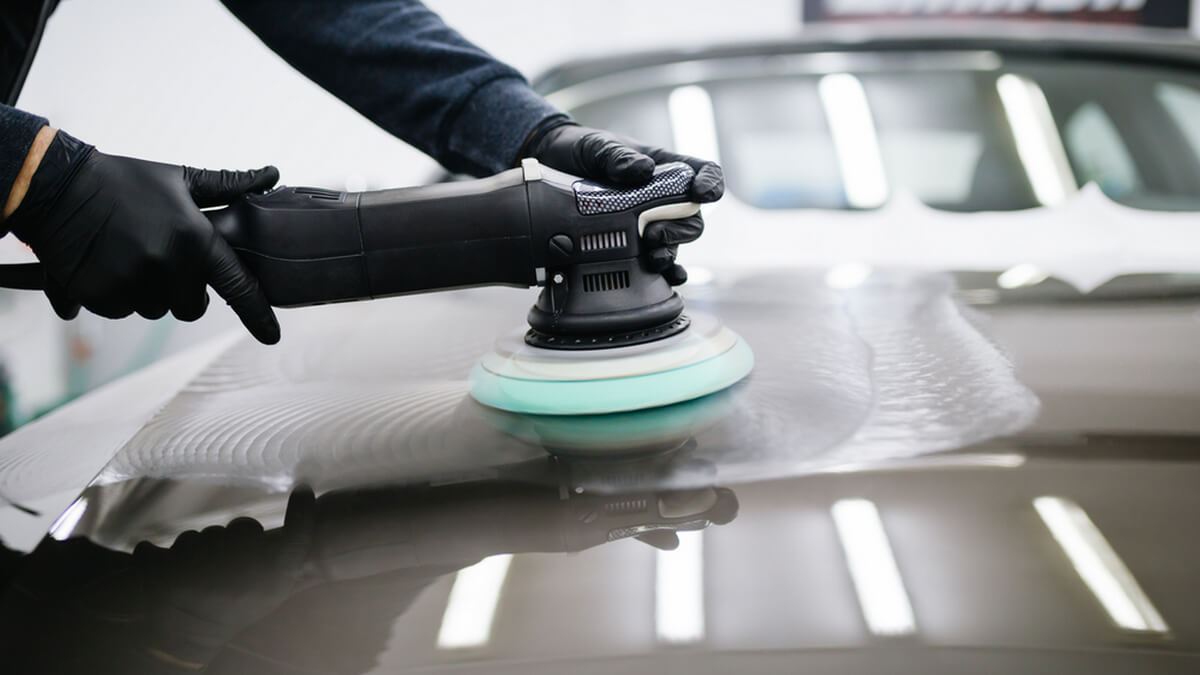
The car care market is one of the biggest industries in the automotive aftermarket segment. Among other products, it offers a wide range of car polishes, waxes, and similar detailing treatments. According to advertisements, all of them will give your faded car a fresh showroom appearance. Still, with so many products available, picking the right one can be difficult. This article will help you understand the differences between these products.
Do You Wax or Polish Your Car First?
We can divide all car paint treatments into two main groups. In one, there are various polishes, which removes paint imperfections and restores shine. In the other are all sorts of waxes, which protects the paint and gives it an additional perception of depth. We will leave this part for the next article and go over the polishing part.
To understand how and when to apply wax or polish, we first must find out how cars paint works. Older cars had a single-stage paint job, which would fade or scratch easily. As a result, they require regular polishing and waxing to look good. However, paints on modern cars have evolved and a complex multilayer system. There is a primer, one or more coats of paint and clear-coat on top of that. This finishing coat protects the paint underneath from UV-rays or harsh weather. It is harder than paint, so it gives protection from mechanical damage.
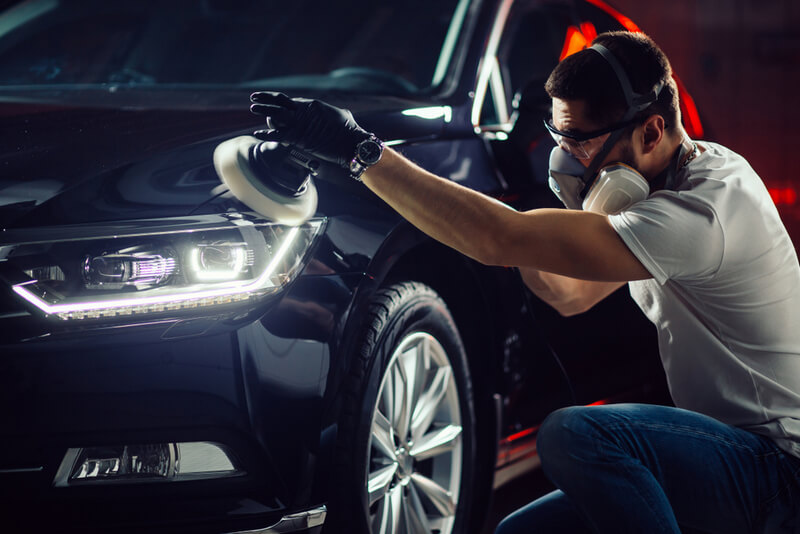
Still, even the most advanced car paints can’t resist mechanical damage. However, they are not all the same. Severe paint defects, such as stone chips or deep scratches, go through all layers and leave the bare metal exposed to the elements. As this is more than a cosmetic defect and can lead to corrosion, applying new paint is the only solution. Lighter damages, such as scratches, scuffs, and swirl marks, are not that deep. They affect only the clear coat and, in worse cases, the paint. This is where polishing comes into play, as it can remove such scratches and make the paint shine again.
In essence, polishing is an aggressive treatment, because it removes thin layers of clear coat. By doing so, it levels out the scratches and makes the paint surface smooth once again. How much clear coat needs to be removed depends on the depth of the scratch.
Is Car Polishing Necessary Before Waxing?
Both polishing and waxing are parts of a car detailing procedure, which has several steps. Whether you need to do all steps depends on the condition of the car paint itself.
The first step is to wash the whole car in detail. For this, you will need a stronger car shampoo or a similar detergent with de-greasing properties. However, make sure the product you are using is not too aggressive, so it doesn’t damage the paint. If there are traces of tar, resin or some other contaminants, remove them using specialized products.
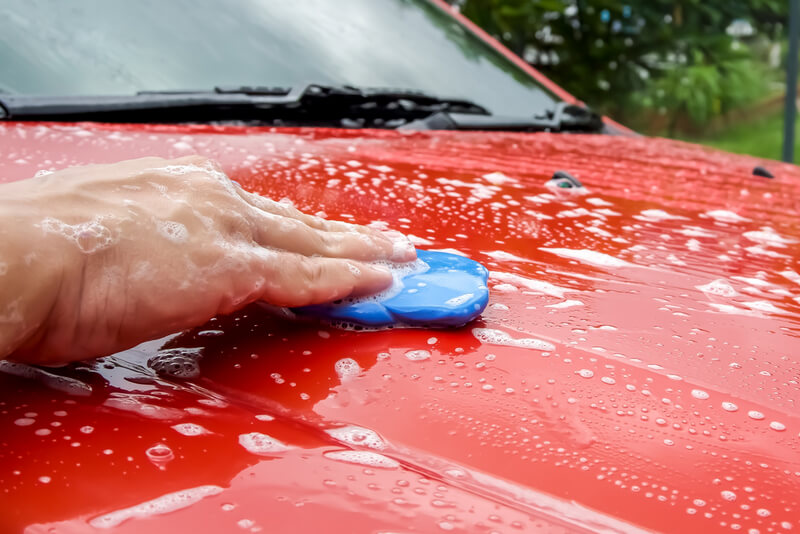
The next step, called claying, is important because it pulls all the embedded contamination off the paint surface. No matter how good you wash and clean your car, there will still be many small dirt particles sticking to the paint. Using clay, which is a kind of fiber putty made for this special application, removes these particles and prevents them from damaging the paint during the polishing process. In addition to the clay bar, you will also need a lubricant. While some use soap and water, this reduces clay lifespan. Instead, there are specialized products for this purpose.
With the car cleaned, it is time to check out the paint with eventual damages and assess how to proceed. If the paint looks as new, without visible scratches or swirl marks, you can skip the polishing and only apply the wax. In most cases, you will face a situation like this when detailing a new car. However, if you still want to polish it, use the mildest product available. Even if there are several scratches, you can treat only those parts of the with a proper polish. This way, you will avoid unnecessary polishing off the whole car while still removing the scratches.
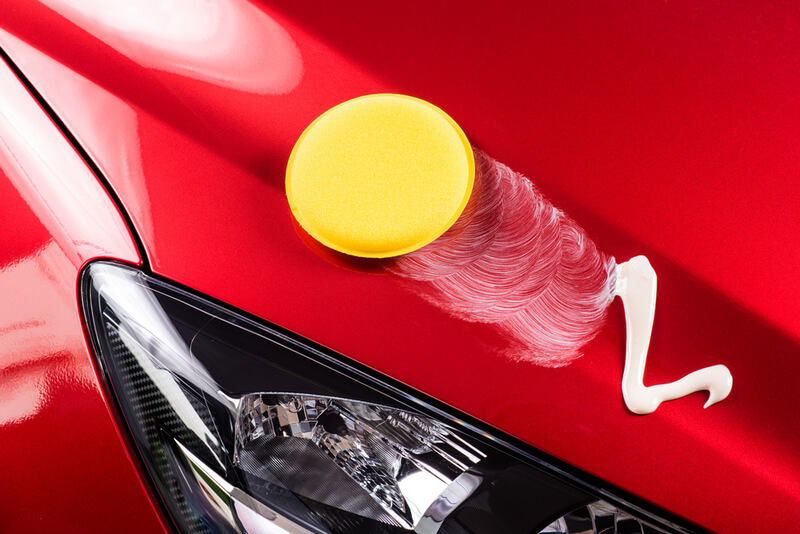
Moderate paint appears to be in good shape and well-maintained at first sight. Still, take a better look and you will find many light scratches and other minor paint damage created by day-to-day car use. The majority of used cars fall within this category, displaying a whole range of light battle scars. In most cases, these imperfections are within the clear coat, meaning you can remove them with polishing. You can polish the car by hand, using a soft cloth, or with an orbital polisher. If using one, select the low-speed setting and avoid keeping it on one spot.
In the end, there is bad paint. It has several scratches and other defects that go through clear coat and paint, all the way to the primer. You will recognize such scratches by their prominent white color, as primers are light gray or beige on most cars. To remove any scratches that are so deep, you will need to use a compound. Although similar to polish, this product is far more abrasive when compared. Be very careful when using it on your car, as it takes away the layers of paint more quickly. If applied right, compounding removes deep scratches, but it also leaves the paint looking dull. Therefore, you must polish it afterward to make it shine, as compounding turns bad paint into moderate paint.
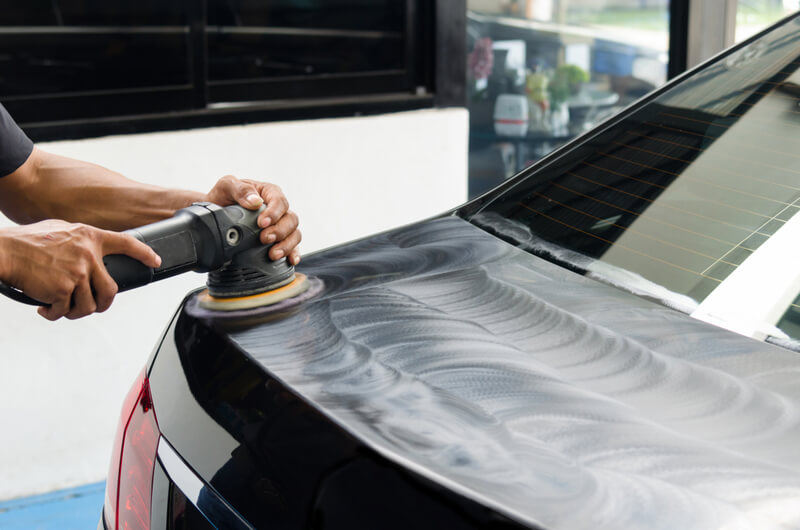
How Often Should You Polish Your Car?
Flawless paint and a mirror-like reflection may tempt you to polish your car as often as possible. However, this would damage the paint in the long run. As we already know, every polish takes away a certain amount of clear coat. If polished too often, it will become too thin and not able to protect the paint from UV rays and harsh weather. To avoid this, once the paint on your car is in good shape, polish it only once or twice a year. And in case there are one or two new scratches, you can polish only those parts.
Find polishes and waxes to protect your car's paint while providing a lasting shine.
